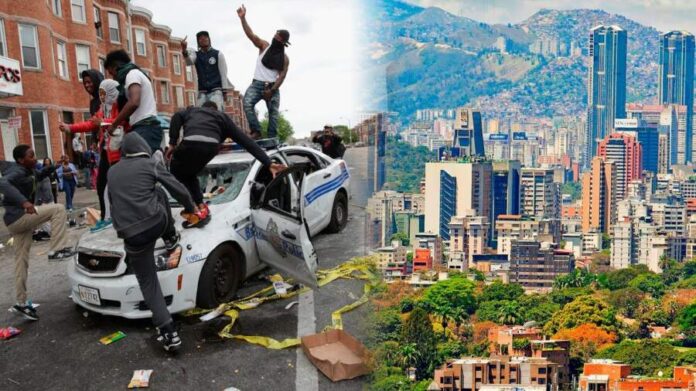Mexico is a beautiful country with a rich culture and history, but unfortunately, it also has a reputation for being dangerous. While most areas of Mexico are safe for tourists, there are certain cities that have higher crime rates and should be avoided. In this article, we will explore the 10 most dangerous cities in Mexico and why they have earned this reputation.
What Makes a City Dangerous?
Before we dive into the list, it’s important to understand what factors contribute to a city being labeled as dangerous. The main factors that are taken into consideration when determining a city’s safety are the crime rate, homicide rate, and drug-related violence. These factors are often influenced by poverty, corruption, and the presence of drug cartels.
Crime Rate
The crime rate is the number of reported crimes per 100,000 inhabitants. This includes both violent and non-violent crimes such as theft, assault, and robbery.
Homicide Rate
The homicide rate is the number of murders per 100,000 inhabitants. This is a key indicator of a city’s safety as it directly reflects the level of violence and danger in the area.
Drug-Related Violence
Drug-related violence is a major issue in Mexico, with many cities being controlled by powerful drug cartels. This type of violence often leads to high homicide rates and contributes to a city’s overall danger level.
The 10 Most Dangerous Cities in Mexico
Now, let’s take a closer look at the 10 most dangerous cities in Mexico and why they have earned this title.
1. Tijuana

2. Ciudad Juárez
Ciudad Juárez, located in the state of Chihuahua, has a population of over 1.4 million people and a homicide rate of 104 per 100,000 inhabitants. It is a major drug trafficking route and has been plagued by violence and corruption for decades. In recent years, the city has seen a decrease in crime rates, but it still remains one of the most dangerous cities in Mexico.
3. Uruapan
Uruapan, located in the state of Michoacán, has a population of over 315,000 people and a homicide rate of 85 per 100,000 inhabitants. The city is known for its high levels of drug-related violence and is a major producer of avocados, which has led to conflicts between drug cartels over control of the industry.
4. Acapulco
Acapulco, located in the state of Guerrero, is a popular tourist destination but has also been plagued by high levels of crime and violence. It has a population of over 800,000 people and a homicide rate of 80 per 100,000 inhabitants. The city has been a major drug trafficking hub for decades and has also seen an increase in gang-related violence in recent years.
5. Victoria
Victoria, located in the state of Tamaulipas, has a population of over 365,000 people and a homicide rate of 78 per 100,000 inhabitants. The city has been heavily impacted by drug-related violence and is also a major transit point for drugs being smuggled into the United States.
6. Culiacán
Culiacán, located in the state of Sinaloa, is known for being the birthplace of many notorious drug lords. It has a population of over 800,000 people and a homicide rate of 70 per 100,000 inhabitants. The city is controlled by powerful drug cartels and has a long history of violence and corruption.
7. Ciudad Obregón
Ciudad Obregón, located in the state of Sonora, has a population of over 400,000 people and a homicide rate of 64 per 100,000 inhabitants. The city is a major drug trafficking hub and has also seen an increase in violence related to organized crime.
8. Coatzacoalcos
Coatzacoalcos, located in the state of Veracruz, has a population of over 300,000 people and a homicide rate of 61 per 100,000 inhabitants. The city is a major oil-producing region and has been heavily impacted by drug-related violence and organized crime.
9. Cancún
Cancún, located in the state of Quintana Roo, is a popular tourist destination but has also seen an increase in crime and violence in recent years. It has a population of over 750,000 people and a homicide rate of 60 per 100,000 inhabitants. The city is a major drug trafficking hub and has also been impacted by gang-related violence.
10. Chihuahua
Chihuahua, located in the state of Chihuahua, has a population of over 900,000 people and a homicide rate of 56 per 100,000 inhabitants. The city is a major drug trafficking route and has also been impacted by violence related to organized crime.
What Can Be Done to Improve Safety in These Cities?
The Mexican government has taken steps to improve safety in these cities, including increasing police presence and implementing programs to combat drug-related violence. However, there is still a long way to go in terms of reducing crime rates and improving overall safety.
Tourists can also take precautions when visiting these cities, such as avoiding certain areas and being aware of their surroundings at all times. It’s also important to research the safety of a city before planning a trip and to follow any travel advisories issued by your government.
Conclusion
While Mexico has many safe and beautiful cities, there are also areas that have earned a reputation for being dangerous. The 10 cities listed above have some of the highest crime and homicide rates in the country, making them places to avoid for tourists. By understanding the factors that contribute to a city’s danger level and taking precautions, we can all work towards making Mexico a safer place for everyone.
For more information, visit ApzoMedia



































































